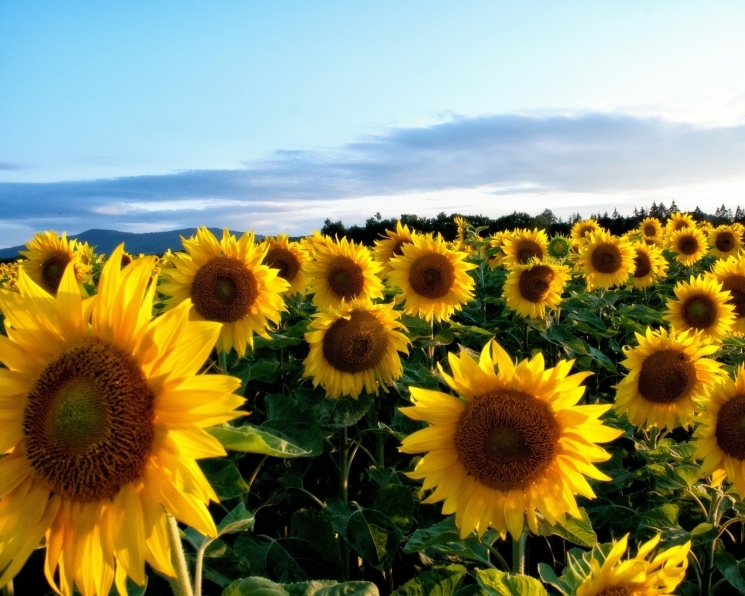Prospects and features of growing high-oleic sunflower

In recent years, before the full-scale invasion, the production of high-oleic sunflower in Ukraine has gradually increased, although there was a sharp decline in 2022. However, now we can talk about the restoration of activity in this segment, so we are understanding what makes such sunflower interesting for farmers.
Market conditions
High-oleic sunflower is called sunflower, the oil of which contains more than 82% oleic acid and a small amount of linoleic acid, which makes it similar to olive oil. Such oil has a neutral taste, a relatively low price and provides stability without hydrogenation. Almost all high-oleic (HO) oil produced in Ukraine is exported, and there is no culture of its consumption in Ukraine yet.
Pre-war trends were very optimistic, and in 2022, 1 million hectares of area was to be sown with high-oleic hybrids. However, as a result of military operations in the regions of traditional cultivation, the sowing area decreased from a record 730 thousand hectares in 2021 (11% of the total area under sunflower) to 300 thousand hectares (6%) in 2024.
Most of the VO sunflower is sown by agricultural holdings that have long-term contracts and are engaged in its cultivation systematically, and not situationally, like small farmers. Therefore, the percentage of targeted use of VO sunflower for oil production has increased from 60% to 80%. In addition to high yield and technological feasibility of cultivation, VO hybrids allow you to get an additional premium, although it is quite unstable, which is why sometimes farmers are forced to sell VO sunflower at the price of regular seeds, which hinders the development of production. In December 2024, the premium reached 4,000 UAH/t.
Difficult weather conditions in recent years, in particular drought, which has affected the southern regions where this crop was usually grown, are hindering the increase in sunflower seed production.
Growing features
In general, the technologies for growing conventional and VO sunflowers are almost the same, although there are certain nuances. The main requirement is the choice of location for sowing VO hybrids. In previous years, conventional sunflowers should not have been grown there, since their seeds could get into the harvest, and the plants could cross-pollinate.
It is also necessary to adhere to spatial isolation of 200-300 meters, although this requirement has now become less relevant, since the oleic acid content in modern hybrids is 88-92%, which exceeds the minimum standard.
In addition, it is important to avoid mixing conventional and VO sunflower seeds at all stages of production, transportation, and storage.
When germinating, VO hybrids are sensitive to soil temperature, so they should not be sown in soil that is warmer than 10 ° C, although late sowing increases the risk of falling into periods of temperature fluctuations during flowering and grain filling.
A large amount of nitrogen fertilizers (over 50-60 kg/ha in dry season) can reduce the content of oleic acid, so it is worth monitoring the balance of nutrition, and not forgetting about the necessary microfertilizers with boron, magnesium, sulfur, manganese, etc. When growing sunflower in the greenhouse, the main attention should be paid not to high yield, but to the quality of seeds and acid content.
The protection systems of conventional and OV sunflowers are almost the same. As in the general market, in the OV sunflower segment, there are noticeable trends of increasing the proportion of hybrids for Express and Clearfield Plus technology. And experts advise to carry out desiccation without delaying the harvesting period, especially since it has a positive effect on the content of oleic acid, especially in adverse conditions - rainy or cold weather.
It is very important to choose hybrids according to the characteristics of the growing region (resistance to drought, diseases, lodging, etc.) and soils.
Experience in growing high-oleic sunflower
Experts predict that in 2025, farmers will give preference (unlike in 2024) to grain crops rather than oilseeds. However, the area under sunflower will not decrease significantly, while the area under soybeans will not repeat last year's record. If the premium is maintained for the time of sowing, then the area under sunflower EO will increase. Usually it is $25-50/t, but fluctuates depending on the market situation. The EO oil market is still not saturated, so the demand for it will remain in 2025.
Farmers who grow high-oleic sunflower say that there are no problems with selling the crop, although they once occurred when factories stopped and did not accept sunflower at all.
The yield of VO hybrids was initially lower than that of conventional varieties, but now breeding has corrected this problem. The choice of hybrid or seeding rate depends on soil moisture, and attention is also paid to weed resistance. Only phosphorus fertilizers are applied to VO sunflower, which allows you to save on costs.
Buyers' requirements for seed quality have become more stringent: if earlier the oleic acid content by a few hundredths of a percent lower than the standard affected only the size of the premium, now such seeds will simply not be purchased. At the same time, if the heat does not greatly affect the oleic acid content, then heavy autumn rains sharply reduce this indicator, so it is worth desiccating in a timely manner. Although, as farmers note, even if you sell VO sunflower as usual, the margin will still be good.


